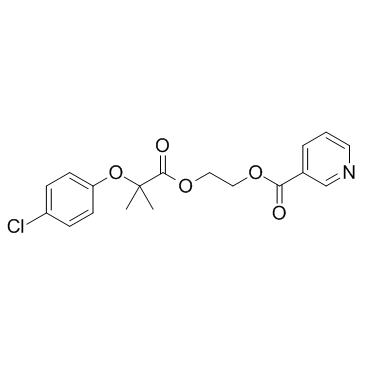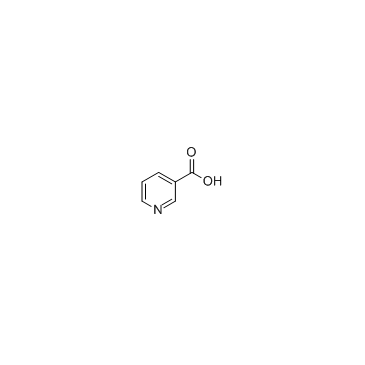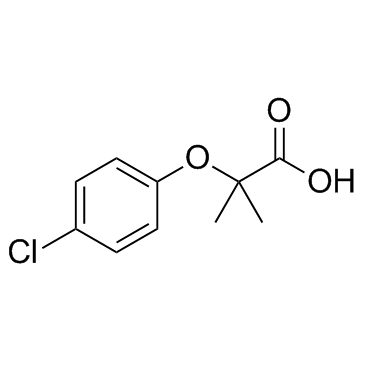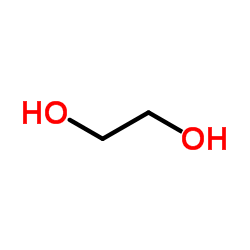| Description |
Etofibrate is the ethandiol-1,2 diester of the nicotinic and clofibric acids. Etofibrate has been shown to be a potent hypolipidemic agent in animal and human.
|
| Related Catalog |
|
| In Vivo |
Etofibrate is the ethandiol-1,2 diester of the nicotinic and clofibric acids. Etofibrate has been shown to be a potent hypolipidemic agent in animal and human. After 10 days of treatment with Etofibrate, the rats show a body weight similar to that found in the control animals but their liver weight is significantly enhanced whereas plasma cholesterol and triacylglycerol levels are decreased. Etofibrate treatment increases the bile flow of the animals, the effect being especially manifest during the first 2 hr after interruption of the enterohepatic circulation and the difference with the controls becomes statistically significant at 30 and 90 min. The cumulative amount of bile secreted plotted against time shows a highly significant linear correlation for both control and Etofibrate treated rats, the slope being significantly higher for the Etofibrate group than for controls[1].
|
| Animal Admin |
Male Sprague Dawley rats weighing 200 to 220 g, fed ad libitum a standard laboratory diet and subjected to a 12 hr on-off light cycle and 22 to 24°C are used. Food is removed from the cages at the onset of the light cycle (7.00 a.m.) and 3 hr later, Etofibrate is administered by stomach tube without anesthesia at a dose of 300 mg/kg body weight/day to one group of animals whereas another, control, group is treated with the medium. After treatments, rats are again allowed free access to food. On the 10th day, the animals are treated as above, but 2 hr after receiving the Etofibrate or the medium the rats are anesthetized with an intraperitoneal injection (0.30 mL/100 g body weight). Animals are maintained at 37°C in a thermostatically controlled cabinet[1].
|
| References |
[1]. Bocos C, et al. Effect of etofibrate on bile production in the normolipidemic rat. Gen Pharmacol. 1995 May;26(3):537-42.
|

 CAS#:59-67-6
CAS#:59-67-6 CAS#:882-09-7
CAS#:882-09-7 CAS#:107-21-1
CAS#:107-21-1 CAS#:3612-80-4
CAS#:3612-80-4 CAS#:31637-96-4
CAS#:31637-96-4